Jaisalmer
‘A thousand years of silence in a goblet
of calcareous blue, of distance and moon,
fashioned of the bare geography of night.’
I remembered the words of Pablo Neruda, the great Chilean poet as I stood in the desert, watching the wind mould the sands of Thar. The morning sun cast a golden glow over the empty sands, devoid of men, animals, noise and life. The serenity was beautiful. I was in Jaisalmer, the ‘Golden city’, which is located in the middle of Thar Desert. Once a busy town on the caravan routes in an undivided India, it emerged as a tourist town after the partition, when the trade came to a virtual standstill.
The biggest attraction in the city is the Jaisalmer fort. It appears like a shimmering golden cliff, almost mirage-like in the sandy stretches of Thar desert. It dominates the landscape, colossal in comparison with the buildings that lie around it; it is a proud sentinel of the glorious history of Rajasthan.
The first thing I noticed about Jaisalmer is that it is golden. From the sand dunes, that surround the city, to the yellow sandstone which plays a predominant part in the architectural landscape, the overall colour of Jaisalmer is golden. Punctuated by bright flashes of colour – be it in clothes, paintings and the interiors of the statuesque havelis that still stand proudly, in this fortress city. I found Jaisalmer to be utterly enchanting.
Called as ‘Sonar quila’, by the locals, Jaisalmer fort is India’s last living fort. Almost 2000 people still live within its walls, unlike other Indian forts which have been forsaken by the people and now are haunted only by occasional tourists and determined guides. Rajput ruler Rao Jaisal had built the eponymous fort in 1156, whose golden colour camouflages it in the desert. It has three large concentric walls that guard the fort. Inside are elaborate havelis, royal palaces, and buildings that have been adorned with the finest Rajasthani craftsmanship.
The former residence of Maharawal of Jaisalmer has been converted into a museum, and is now open to the public. It is located in the main chowk of the fort. A five storeyed structure, it has richly carved balconies and lattices. It also houses an interesting collection of artefacts, depicting the history of Jaisalmer. I climbed up to the rooftop of the palace, to be rewarded with a stunning, panoramic view of the city. Do not miss the Hindu and Jain temples located within the fortress. Built centuries ago, they are still in excellent shape and magnificently embellished.
Jaisalmer is famed for its beautiful havelis. I felt that the people had broken the arid monochrome of the Thar desert, by building elaborate structures, and imbibed colour into their lives, by decorating their houses in vibrant frescoes and paintings, and wearing bright, multi coloured clothes. I headed to Patwon ji ki haveli, a renowned building in Jaisalmer. A cluster of five buildings makes up the haveli. Built by a rich trader, Guman Chand Patwa, for his five sons, it is a wonderful piece of architecture. Viewing it is like falling headlong into a romantic tale from the Arabian nights. Opulent carvings adorn every inch of the structure. Elaborate latticed screens on the walls allow sun to stream through, and let the visitors watch the streets from the windows, unobserved. Government offices occupy some of the units of the haveli. A shop is located in another, where you can buy handicrafts produced by the local artisans.
My next stop was Salim Singhji ki haveli, a 300 year old architectural marvel. It was built by the Prime Minister of the Jaisalmer state, Salim Singh. Peacock shaped brackets support an arched roof, while numerous carved balconies add to its beauty. Two large stone tuskers guard the entrance.
Famished, I headed to 1st Gate-Home fusion, a beautiful hotel located near the city centre. Their restaurant has an exotic menu, where Indian and Italian cuisines feature predominantly. I loved their cappuccino and panna cotta. If you are in mood for some authentic Indian cuisine, you can opt for The Trio, a rooftop restaurant, located in the heart of the city. Jaisalmer also has a variety of shops selling lassi infused with bhang, a preparation of cannabis flowers and leaves. I would recommend it only if you are feeling particularly adventurous.
If your brand of adventure is strolling through the unconfined, silent desert, try the camel safaris. They range from a few hours, to overnight trips. Tents may be provided for night trips, and food is cooked over an open flame, which gives the experience an authenticity that is lost in the bustling city of Jaisalmer. I have been told that sleeping under the stars in the middle of the desert, is a life altering experience.
Shopping in Jaisalmer is a unique experience. The markets at Sadar Bazaar, Sonaron Ka Bas, Manak Chowk and Pansari Bazaar are quite good. Look for camel leather goods and Rajasthani embroidery. You can also head to the government run shops – Khadi gramodyog bhandar, and Rajasthali. They have a beautiful collection of authentic Rajasthani goods with exorbitant price tags that appear to fleece the tourists.
Though the next town on my Rajasthan itinerary beckoned, I was reluctant to leave Jaisalmer. There seemed to be something new to discover every day in the narrow alleys and golden walls of Jaisalmer. The glittering markets and vibrant, colourful interiors of the spacious havelis were entrancing. Even as the Jaisalmer fort became smaller in the mirror of the car, the impression on my mind made its mark forever.
Image credits: Wikimedia Commons – Antoine Taveneaux, Jitesh Madhwani, Ahangem

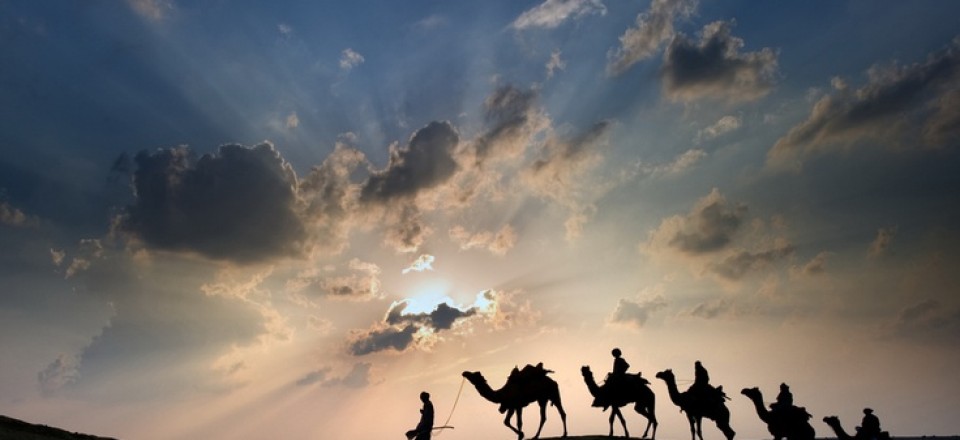

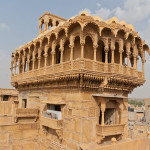
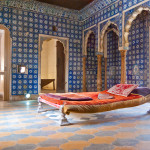
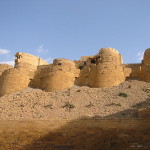
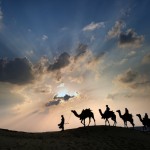
Nice post. I like your blog. Thanks for writing. Useful information for visitor. You can also check best Hotels in Dharamshala with price with an best amenities – https://www.ixigo.com/hotels-in-dharamshala-lp-1140380